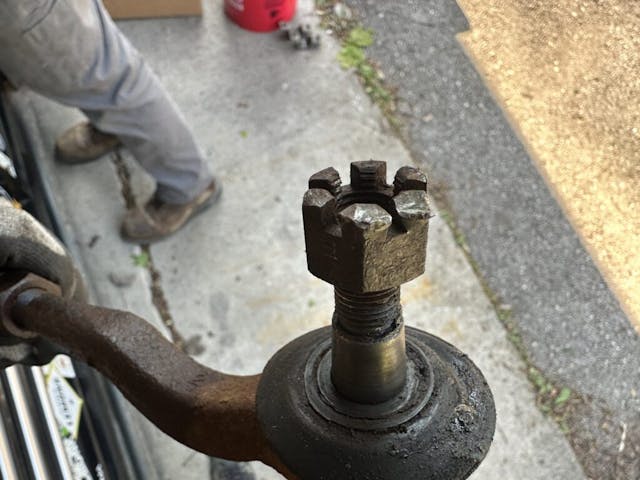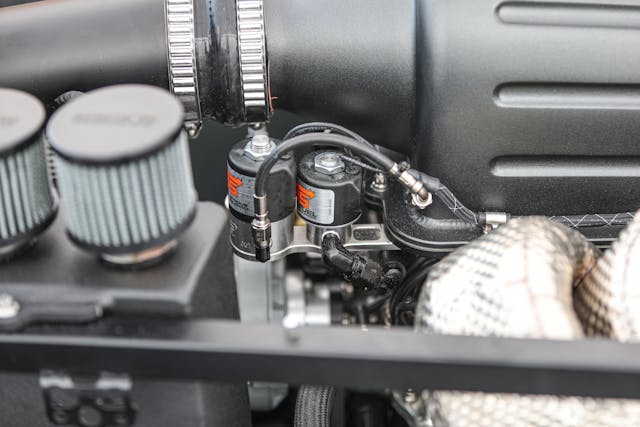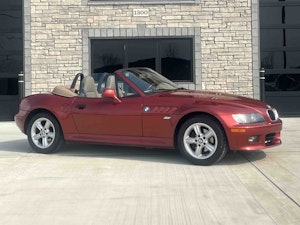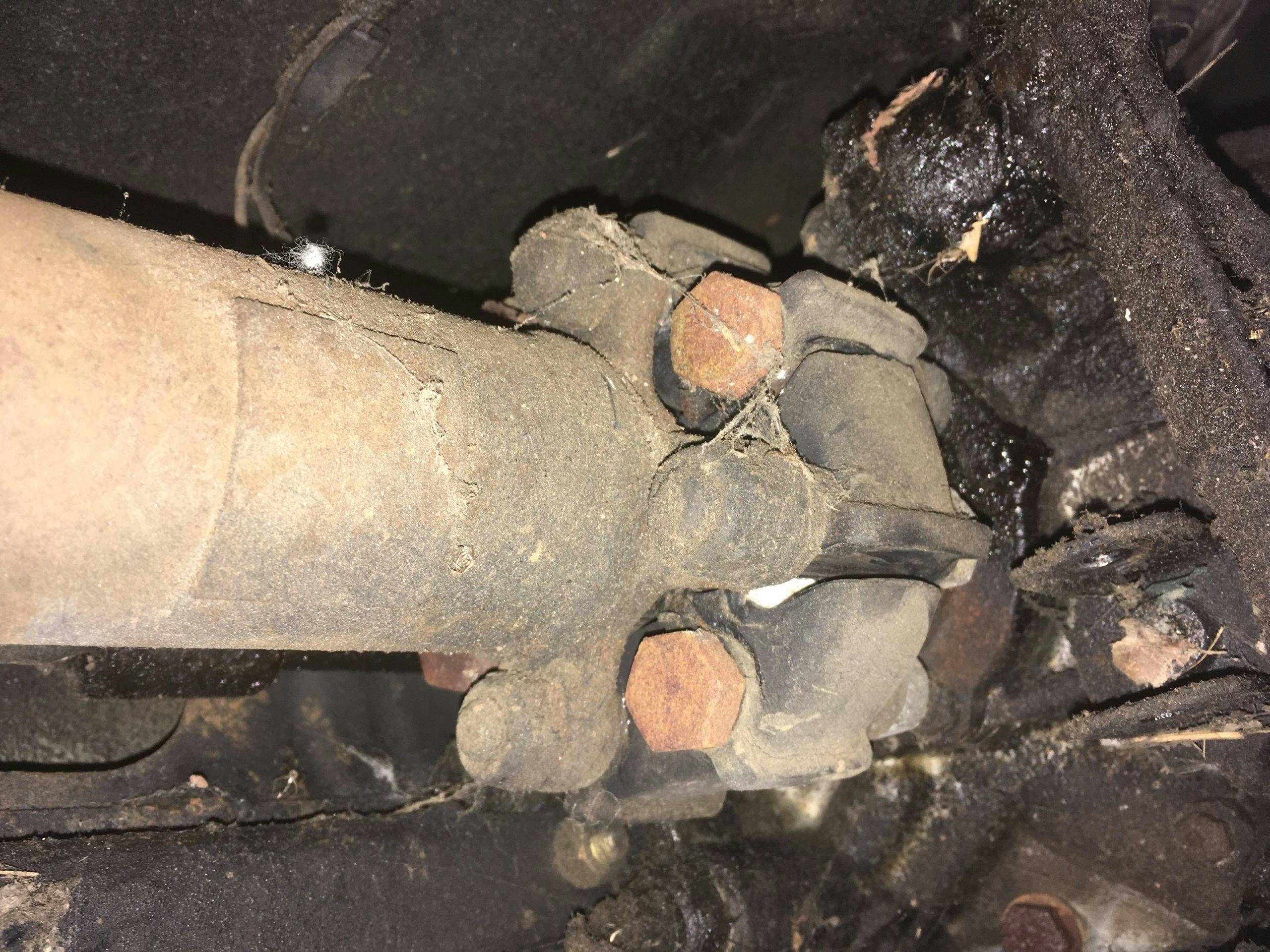Media | Articles
According To You: Oddest Automotive Words
Regardless of era or hobby, odd words—those unique to a particular subset of enthusiasts—always emerge as a means of putting a finer point on objects in the world around us. The automotive hobby is filled with so many people, from so many diverse backgrounds and professions, who have contributed to the automotive industry’s special language. That added diversity must certainly make enthusiasts in this space even more unique, or so was my thinking when I posed this question.
Members of the Hagerty Community eagerly chimed in, to the point that the initial question drew a few backfires. One revolved around what constituted a word—turns out some automotive words we use are actually acronyms, abbreviations, or initialisms. (Not that we needed any more reason to collectively hate the CVT gearbox!)
No matter, here’s a list of some of the oddest automotive terms you’ve ever heard. Chime in and give us a few more in the comments, too!

Ronnie Schreiber: “Backlight” or “Backlite” for the rear glass.
DUB6: I always thought that “pinion” was a strange-sounding car term. Note that NOS also stands for New Old Stock – which in and of itself is kind of odd-sounding but makes perfect sense when you know what it refers to. Let’s not forget that Brits call the things “wings” that we call “fenders.” The “dashboard” in my car is so named because in horse-drawn carriages, there was a board up front to keep out the dash kicked up by the horse(s). Pretty weird to still call something that since it has next to no relationship to the original meaning.
Stephen: More horseless carriage leftovers: Rocker panels that do not rock and running boards now only used as steps.
Marketplace
Buy and sell classics with confidence
TG: Hypoid
Timothy: After I was finished reading this article “hypoid” was also the first thing that popped into my mind!
I remember as a young gearhead helping my high school buddy put a new clutch in his ’68 Goat out in his gravel driveway with the car up on ramps. I put the trans on my chest and lifted it up to slide it into the bell housing and “hyoid” oil ran onto my T-shirt. Of course, we all called it gear oil back in the day and we all know that it had a very unique smell. Long story short that shirt ended up in my friend’s garage can when we were finished with our task. I wasn’t going anywhere near my 69 Mach1 Cobra Jet smelling like that so I washed off my chest with a leaded gasoline-soaked rag. It’s simply amazing to me that now that I’m in my 60’s I haven’t developed some incurable disease from all the toxins I exposed myself to in my youth!

Marc: As a car design veteran, there are a bunch of weird terms we use:
Tumblehome – The angle of side glass/pillars from the front of the vehicle.
Beltline – The bottom of the side glass
Buttress (Also called a flying buttress) Taken from architecture, it describes a thin panel extending from the greenhouse. Often used on older mid-engined designs but also on the Jaguar XJS.
Spoiler – Aerodynamic appendage on the rear of a vehicle. What is it spoiling, exactly?
Ducktail – Similar function to the above, usually on a Porsche 911. (See also Whale Tail)
Dead Cat Hole – The gap between the top of the tire and the fender. I’m pretty sure we had another term for this when I was a young designer but I can’t remember it now.
Shark Fin – The triangular area at the front of the front door glass. Often used to mount a side view mirror.
Bone Line – A softly-radiused edge that defines a break between two surfaces. Something like the top of a fender or fender flare but could also be a character line.
Hagerty published an article on auto design terms a while back, too.
sledawgpilot: Spoiler is spoiling aerodynamic lift.
Gary: Tumblehome – Isn’t that a bouncy house for the kiddies? I’ll be here all week!
eagerdever: “Tumblehome” is a boating term that refers to the V shape at the front rolling inward toward the transom where it’s wider at the chine than it is at the deck.
Tim: “Spoiler” is a seemingly weird term, but it literally spoils the clean airflow off the car’s tail end, forcing air upward to cause downforce at the back of the vehicle.
Hoosier Daddy: Dogleg – area in front of rear wheel shaped like, well, a dog’s leg. It’s strange that they picked a dog instead of any other animal.
TG: Since you said automotive and not car…5th wheel
DUB6: Agreed. Long before I’d ever seen one on a pick-up type truck, I saw 5th wheels on semi truck tractors, many of which actually have 10 wheels before you even get to that one on the back of the frame.

Mikey: Castellated Nut (King Ludwig), Cotter Pin, Woodruff Key (not wood, and not rough), Worm Gear (for worms on expedition), Panhard Rod (rendered compliant designs obsolete), Crush Washer (scrap appliance recycling), Speed Governor (may I introduce the Honorable Enzo, our Governor of Speed?).
Ray: Dash, actually the Instrument panel. Fire Wall, actually the Dash. Where’s the fire?
Roger: Working at GM’s HVAC plant we were not allowed to call it that. The lawyers did not like implying that there is a potential for fire there. It is the front of dash or FOD
Dr. Seldom B. Overboost: “Dipstick” is a term of endearment amongst car guys. “Wing nut” is same. And “Slick” is something you don’t want to slide.
3redcars: Homologation.
Deborah: I was always intrigued by “spun bearing.” Apparently I don’t want one.
Leonard: It’s a Harmonic Damper, not a balancer. It doesn’t balance anything.
Tim: “Stovebolt” given to Chevrolet 6-cylinder engines from 1929 to 1962 because the bolt heads looked like those used in wood stoves. And there’s always “Nail Head” which was given to 1953 to 1966 Buick engines because of the arrangement and size of the valves.

Anthony: “NoS” was Mike Thermos’s business name for “Nitrous Oxide Systems.” The original logo shows the “o” in lowercase font under the arrow.
300 Fan: Cat whiskers.
Terry: “Bundle of Snakes” for a particular design of exhaust pipes. Ripping canvas to describe the exhaust note of a Ferrari and others. Dog tracking to describe the off set track of a vehicle that has been clobbered!
Don: How about “Three in the Tree”? Had myself an inline 6 Chevy II (thank Grandpa!) with three in the tree!
Ken_L: I remember it as “three ON the tree”

Michael: If you didn’t have “Three on the Tree”, you might have a “Four on the Floor”.
Luke: Giubo – I thought Sam Smith made this up but it’s a real thing. Apparently a portmanteau of the Italian words giunto (‘joint’ or ‘coupling’) and boschi (the surname of the Italian engineer who designed and patented the first flex disc, Antonio Boschi!
Don Sherman: Repeat after me: Prin-dul. (PRNDL)
hyperv6:
Harmonic Balancer. Are we reaching for Harmony?
King Pin. Are we bowling or a Mobster?
Exhaust Donut. Can I get them at Dunkins?
Dog House. Your wife can’t put you in this one.
Escutcheon: A radio cover plate if you can say it.
Banjo Fitting. Boy you got a pretty fitting. Twang!
Propeller shaft. For when you really are flying.
Pumpkin if that is what you call your rear end.

Ron: Toyota’s TRD…I call it a turd.
Steve: Spanner. (English for wrench.)
RJ: Close, but its a Tubular Spanner for socket, Ring Spanner for a box-end wrench. A Tubular Spanner included in the boot for removing lug nuts will be accompanied by a Tommy Bar (which also is used to prise off the Nave plates).


















I point out the turd on Toyota fenders on a regular basis
My first run-in with the guibo (what???) was during a round of repairs on my sister’s BMW that resulted in near disassembly of the entire car
S.0.B…………any car I had that wouldn’t run or had me stranded somewhere!!!!
I’ll agree with “spun bearing”. The first time I heard that, my initial thought was “wouldn’t you want them to spin?” (obviously thinking of a roller bearing)
HAVERSOVER
A word we made up that we could use to describe any part we didn’t actually know the correct terminology for.
“That guy seems to be having a problem with his Haversover.”
I’ve wondered how someone thought TRD was a good thing, didn’t they go to junior high? But TLA’s are great!
I wonder how folks keep thinking TRD is a good thing for decades…
The Giubo is also known as a Rotoflex coupling.
Tumblehome is one of the funniest.
Tumblehome – The angle of side glass/pillars from the front of the vehicle. Also a bouncy house for small children.
Tumblehome came from yacht design…I don’t know where they got it. Sorry!
“Leonard: It’s a Harmonic Damper, not a balancer. It doesn’t balance anything.” Generally yes, but not always. Some engines (the 400 cid Chevy small block comes to mind) are externally balanced and the harmonic balancer both damps vibration and is heavier on one side, contributing to the overall balance of the engine’s rotating components.
Rzeppa Joint
CHIMSL-Center high mounted stop light
Elephant Balls The twin weights attached to the floorplan to dampen floor pan vibration
China Wall-the part of a V-8 block found at each end between the banks
Sturdilee-a triangular sheet metal brace
Suck/Squeeze/Bang/Blow! The four strokes of an internal combustion engine
Cocktail shakers in the trunk of a 67 firebird convertible
The charming German word for the rubberized horsehair padding used on German car seats well into the 90s: gummihaar.
Being a Ford Parts Manager for over 40 years I always wondered when it would be considered politically incorrect or even banned all together to use the terms, MASTER CYLINDER and SLAVE CYLINDER. Think about it.
Even if one does not like the cultural implications, it accurately describes the interrelationship between the two components in brief, short words that everybody understands… important considerations for technical discussions
At work, they are trying to get us to replace the term manlift with Mobile Elevating Work Platform (MEWP). We make things extremely complicated and inefficient when we try to integrate trendy politics into the technical discussion.
And what about those so called FLOATING VALVES OR LIFTERS????
And POSI isn’t that a group of cowboys.lol
And just what does and idler gear or idler pulley have to do with the idle?